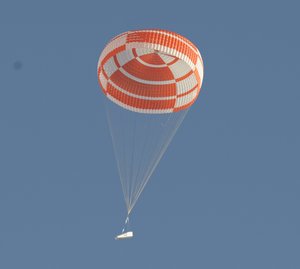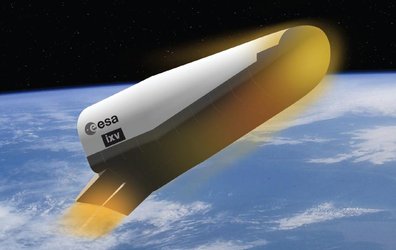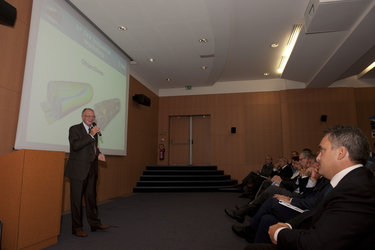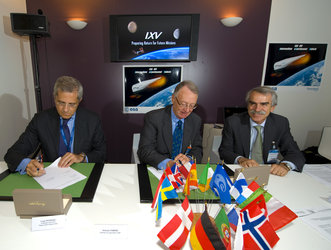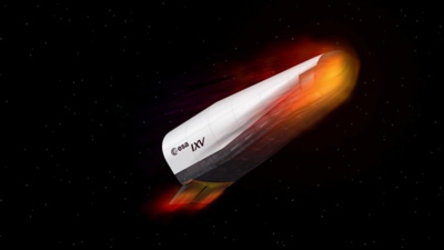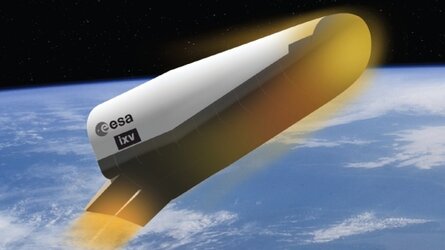Safe splashdown for Intermediate eXperimental Vehicle
ESA’s experimental reentry vehicle passed its milestone descent and landing test on Wednesday at the Poligono Interforze Salto di Quirra off the east coast of Sardinia in Italy.
The full-scale Intermediate eXperimental Vehicle (IXV) prototype was released from an altitude of 3000 m by a helicopter, falling to gain speed to mimic a space mission before parachute deployment. The parachute slowed IXV for a safe splashdown in the sea at a speed below 7 m/s.
This last step in a series of tests shows that IXV can be recovered safely after its mission into space.
The IXV project is developing and flight-testing the technologies and systems for Europe’s future autonomous atmospheric reentry vehicles.
It will be launched by ESA next year on Vega, Europe’s new small launcher, into a suborbital path. It will reenter the atmosphere as if from a low-orbit mission, testing new European reentry technologies during its hypersonic and supersonic flight phases.
Previous campaigns included several water impact tests at CNR–INSEAN, a marine-engineering research institute in Rome, Italy. An instrumented subscale prototype was released at various angles and speeds to assess the best configuration for minimum impact loads.
At the Yuma Proving Ground in Arizona, USA, the multistage supersonic parachute was qualified up to the opening of the main subsonic stage.

Building on these, Wednesday’s test started with the redeployment of the main subsonic parachute followed by: cutting the two ablative thermal protection covers of the parachute bridles, firing the 16 non-explosive actuators to release the four panels covering the floatation balloons, jettisoning the panels, detecting the water impact, and deploying the beacons in order to pinpoint the prototype bobbing in the sea.
An anomaly in inflating the balloons will be investigated. The vehicle was recovered from the sea and taken to land for detailed inspections and analysis.

This test highlights the importance of early inflight verification to secure a robust space vehicle design, confirming the technical direction and possibly suggesting further improvements.

“Our special thanks go to the Italian Defense and the Italian Aerospace Research Centre (CIRA) for the commitment and the excellence exhibited in performing complex air–sea–ground operations enabling the successful challenging descent and landing system test,” noted Giorgio Tumino, IXV Programme Manager.
On IXV’s flight next year, the suborbital vehicle will separate from its Vega launcher at an altitude of 320 km. IXV will coast to 430 km and then begin its reentry phase, recording an impressive amount of experiment data from a large number of conventional and advanced sensors.
The entry speed of around 7.5 km/s at an altitude of 120 km will create the same conditions as those for a vehicle returning from low orbit. The mission, lasting more than 2 hours, will end with splashdown in the Pacific Ocean to await recovery and analysis.















 Germany
Germany
 Austria
Austria
 Belgium
Belgium
 Denmark
Denmark
 Spain
Spain
 Estonia
Estonia
 Finland
Finland
 France
France
 Greece
Greece
 Hungary
Hungary
 Ireland
Ireland
 Italy
Italy
 Luxembourg
Luxembourg
 Norway
Norway
 The Netherlands
The Netherlands
 Poland
Poland
 Portugal
Portugal
 Czechia
Czechia
 Romania
Romania
 United Kingdom
United Kingdom
 Slovenia
Slovenia
 Sweden
Sweden
 Switzerland
Switzerland


























